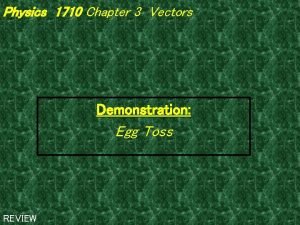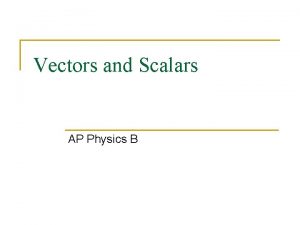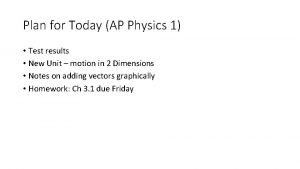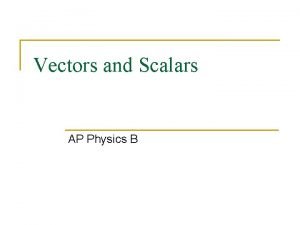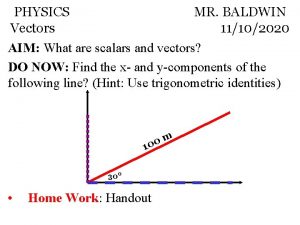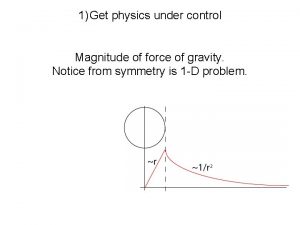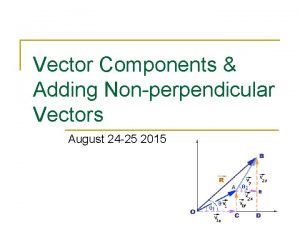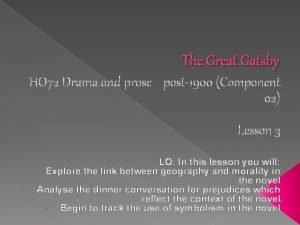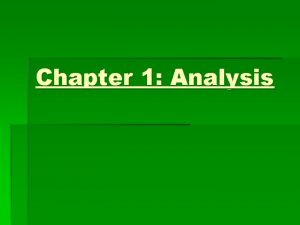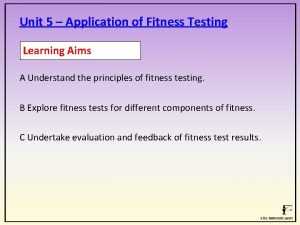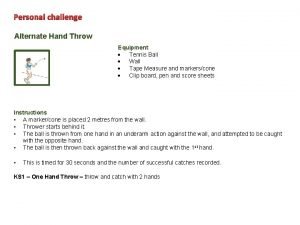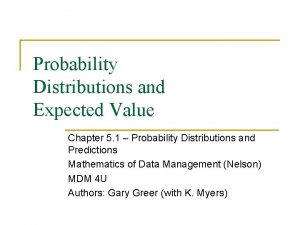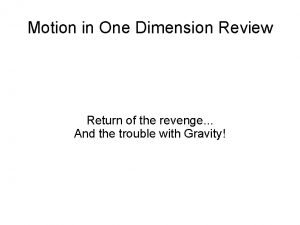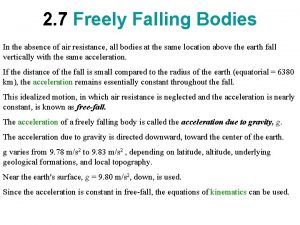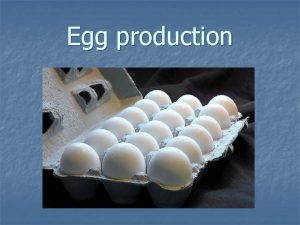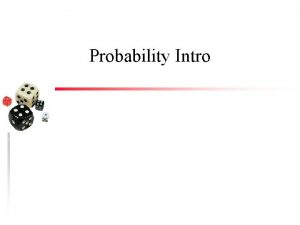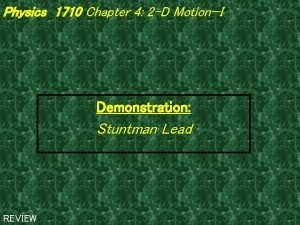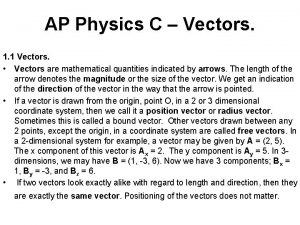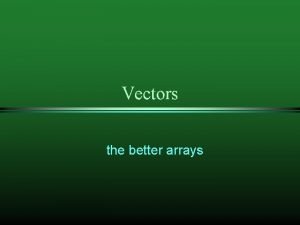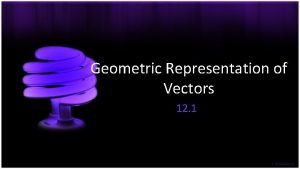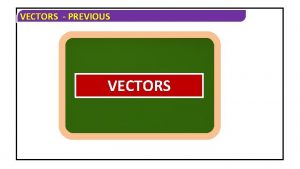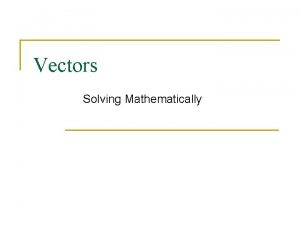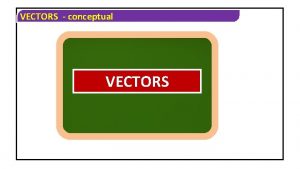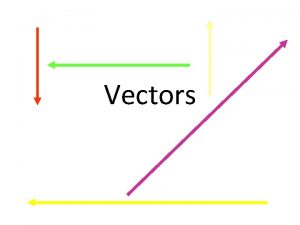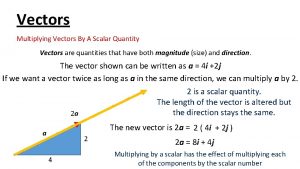Physics 1710 Chapter 3 Vectors Demonstration Egg Toss
























- Slides: 24

Physics 1710 Chapter 3 Vectors Demonstration: Egg Toss REVIEW

Physics 1710 Chapter 3 Vectors Why did the egg not break the first time it was caught but did the second time? Think! REVIEW No Talking! Confer!

Physics 1710 Chapter 3 Vectors Different acceleration a = (vfinal 2 – v initial 2)/ (2∆x) Why wear a seat belt or use air bags? REVIEW

Physics 1710 Chapter 3 Vectors Seat belt: Air Bag Video

Physics 1710 Chapter 3 Vectors 1′ Lecture: • A Vector is a quantity that requires two or more numbers to define it and acts like the displacement vector. • The magnitude of a vector is the square root of the sum of the squares of its components. • A vector makes an angle to the x-axis whose tangent is equal to the ratio of the y-component to the x-component.

Physics 1710 Chapter 3 Vectors Is it far to Budapest? Stranded Motorist asks horse cart driver, “Is it far to Budapest? ” “Nem! It is not far. ”

Physics 1710 Chapter 3 Vectors “Then, may I have a ride? ” “Egan! Climb up. ” After a long time the Motorist says, “I thought you said it was not far. ” What is the problem? The difference The driver between replies, “Oh! Now it is very to Budapest. ” distancefar and displacement.

Physics 1710 Chapter 3 Vectors Where is the Student Union? Turn to your classmate and the one in the odd numbered seat, tell the other where is the Student Union. Position is a vector.

Physics 1710 Chapter 3 Vectors A Scalar is a entity that requires only one number to characterize it fully. (Like a scale. ) Examples: What time is it? What is your weight? What is the temperature of the room? What is the weight of 100. Kg man? Weight = g m = 9. 80 N/kg (100. kg) = 980 N.

Physics 1710 Chapter 3 Vectors A vector is a quantity that requires more than one “component” to “tell the whole story. Example: Where is the treasure buried in the field? Use “orthogonal, ” that is, perpendicular axes.

Physics 1710 Chapter 3 Vectors Location in Manhattan 4 th St and 2 nd Ave 2 nd St and 4 th Ave (4, 2) (2, 4)

Physics 1710 Chapter 3 Vectors Position in 2 -Dimensions or higher is a VECTOR. We use boldface, not italic, to denote a vector quantity, italics to denote the scalar components. We often represent a vector as a position on a graph with an arrow connecting the origin to the position.

Physics 1710 Chapter 2 Motion in One Dimension—II 2 -Dimensional Vector Position Vector r r = (x, y) = x i + y j Y(m) x x= r cos θ y = r sin θ r θ j i X (m) y | r | = r = √(x 2 + y 2), θ = tan – 1(y/x)

Physics 1710 Chapter 3 Vectors 80/20 Fact: The length of the arrow represents the magnitude of the vector. In orthogonal coordinates, the magnitude of vector A given by: ∣A∣ = √ [Ax 2 + Ay 2 + Az 2 ]

Physics 1710 Chapter 3 Vectors 80/20 Fact: The direction of the vector A is characterized (two dimensions) by the angle it makes with the “x-axis. ” tan θ = Ay / Ax

Physics 1710 Chapter 2 Motion in One Dimension—II 2 -Dimensional Vector Y(m) x Position Vector r | = r = √(x 2 + y 2) r y = √(2. 0 2 + 1. 5 2) = √(4. 0 + 2. 25 ) = √(6. 25) = 2. 5 m X (m)

Physics 1710 Chapter 3 Vectors 80/20 Fact: One may combine vectors by “ vector addition”: C=A+B Then C x= A x+ B x & C y= A y+ B y Key point: Add the components separately. Observe strict segregation of x and y parts.

Physics 1710 Chapter 3 Vectors 80/20 Fact: The product of a scalar and a vector is a vector for which every component is multiplied by the scalar: C=k. A Cx = k A x Cy = k A y Cz = k A z

Physics 1710 Chapter 3 Vectors N. B. ( Note Well): ⅠA + BⅠ ≠ (A + B)

Physics 1710 Chapter 3 Vectors Note: ⅠA + BⅠ = √[(Ax+ Bx ) 2 + (Ay+ By ) 2 ] ≤ (A + B) Proof: (Ax+ Bx ) 2 + (Ay+ By ) 2 ≤ (A+B)2 = A 2 +2 AB +B 2 LHS = Ax 2 +Ay 2 + Bx 2 + By 2 + 2 Ax. Bx + 2 Ay. By RHS = Ax 2 + Ay 2+ Bx 2 + By 2 +2√(Ax 2 Bx 2 + Ay 2 By 2 + Ay 2 Bx 2 + Ax 2 By 2) LHS ≤ RHS 2 Ax. Bx + 2 Ay. By≤ 2√(Ax 2 Bx 2 + Ay 2 By 2 + Ay 2 Bx 2 + Ax 2 By 2) A x 2 B x 2 + 2 A x B x A y B y + A y 2 B y 2 ≤ A x 2 B x 2 + A y 2 B y 2 + A y 2 B x 2 + A x 2 B y 2 2 A x B x A y. B y ≤ A y 2 B x 2 + A x 2 B y 2 iff 0 ≤ (Ay. Bx - Ax By) 2

Physics 1710 Chapter 3 Vectors 80/20 Fact: We often designate the components of the vector by unit vectors ( i, j, k ) the x, y, and z components, respectively. Thus, 2. 0 i + 3. 0 j has an x-component of 2. 0 units and a y-component of 3. 0 units. Or (2. 0, 3. 0)

Physics 1710 Chapter 3 Vectors Summary: • To add vectors, simply add the components separately. • Use the Pythagorean theorem for the magnitude. • Use trigonometry to get the angle. • The vector sum will always be equal or less than the arithmetic sum of the magnitudes of the vectors.

Physics 1710 Chapter 2 Motion in One Dimension—II 1′ Essay: One of the following: • The main point of today’s lecture. • A realization I had today. • A question I have.

Physics 1710 Chapter 3 Vectors
 Egg toss physics
Egg toss physics Vectors and scalars in physics
Vectors and scalars in physics Ap physics vectors
Ap physics vectors Ap physics vectors test
Ap physics vectors test A bear searching for food wanders 35 meters east
A bear searching for food wanders 35 meters east Vector addition formula
Vector addition formula Physics vectors
Physics vectors Vector quantity formula
Vector quantity formula Components of a vector
Components of a vector Map of the great gatsby
Map of the great gatsby West egg vs east egg
West egg vs east egg West egg vs east egg
West egg vs east egg The great gatsby geography
The great gatsby geography Symbolism of the green light in great gatsby
Symbolism of the green light in great gatsby West egg and east egg
West egg and east egg West egg and east egg
West egg and east egg Normative data for wall sit test
Normative data for wall sit test Alternate wall toss
Alternate wall toss Alternate hand wall toss
Alternate hand wall toss Normative data for ruler drop test
Normative data for ruler drop test Expected value probability
Expected value probability A football game customarily begins with a coin toss
A football game customarily begins with a coin toss Pushups chart
Pushups chart Www.youtube.com
Www.youtube.com Native american stick toss game
Native american stick toss game
